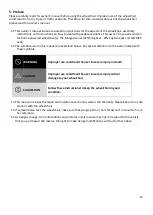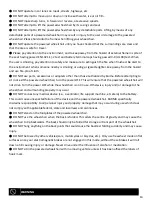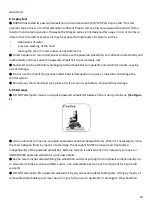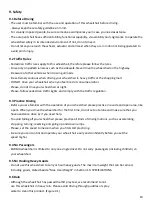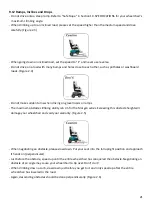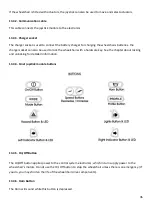
24
11.1 Electromagnetic interference from radio wave sources
Powered vehicles may be susceptible to electromagnetic interference (EMI), which is interfering
electromagnetic energy (EM) emitted from sources such as radio stations (Radio Frequency Interference),
TV stations, amateur radio (HAM) transmitters, two-way radios, and cellular phones. The interference (from
radio wave sources) can cause the powered vehicle to release its brakes, move by itself, or move in
unintended directions. It can also permanently damage the powered vehicle's control system. The intensity
of the interfering EM energy can be measured in volts per meter (V/m). Each powered vehicle can resist
EMI up to a certain intensity. This amount of resistance is called its immunity level. The higher the
immunity level, the greater the protection. At this time, current technology can achieve at least a 20 V/m
immunity level, which would provide useful protection from the more common sources of radiated EMI.
This powered vehicle model, with no further modification, has an immunity level of 20 V/m without any
accessories.
There are several sources of relatively intense electromagnetic fields in our everyday environment.
Some of these sources are obvious and easy to avoid. Others are not apparent, and exposure could be
unavoidable. However, we believe that by following the warnings listed below, your risk to EMI can be
greatly minimized.
11.2 The sources of radiated EMI can be broadly classified into three types:
Hand-held portable transceivers (transmitter-receivers) with the antenna mounted directly on the
transmitting unit, such as citizens band (CB) radios, walkie-talkies, security and fire or police transceivers,
cellular telephones and other personal communication devices.
NOTE:
Some cellular telephones or similar devices transmit signals while they are ON, even though
they are not in use.
Medium-range mobile transceivers used in police cars, fire trucks, ambulances and taxis usually having the
antenna mounted on the outside of the vehicle; and Long-range transmitters and transceivers, such as
commercial broadcast transmitters (radio and TV broadcast antenna towers) and amateur (HAM) radios.
NOTE:
Other types of hand-held devices (cordless phones, laptop computers, AM/FM radios, TV sets,
CD players, cassette players, and small appliances such as electric shavers and hair dryers, etc.)
So far as we know, are not likely to cause EMI problems.
11.3 Powered vehicle electromagnetic interference (EMI)
Because EM energy rapidly becomes more intense as one moves closer to the transmitting antenna
(source), the EM fields from hand-held radio wave sources (transceivers) are of special concern. It is
possible to unintentionally bring high levels of EM energy too close to the powered vehicle's control system
Summary of Contents for Morgan KISS Seat
Page 2: ...2 release 04 2019...
Page 9: ...9 3 Declaration of conformity Morgan Series...
Page 116: ...116...



